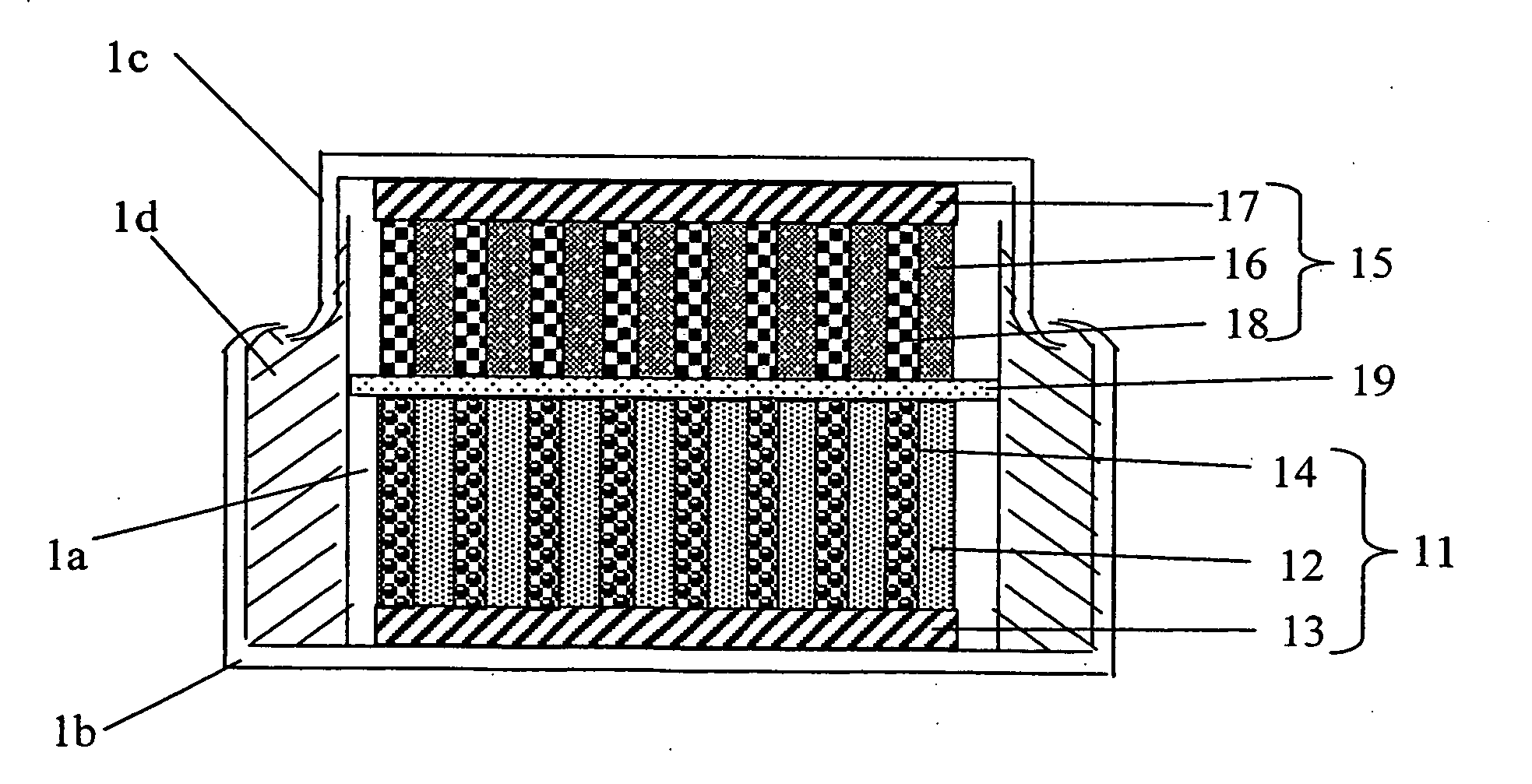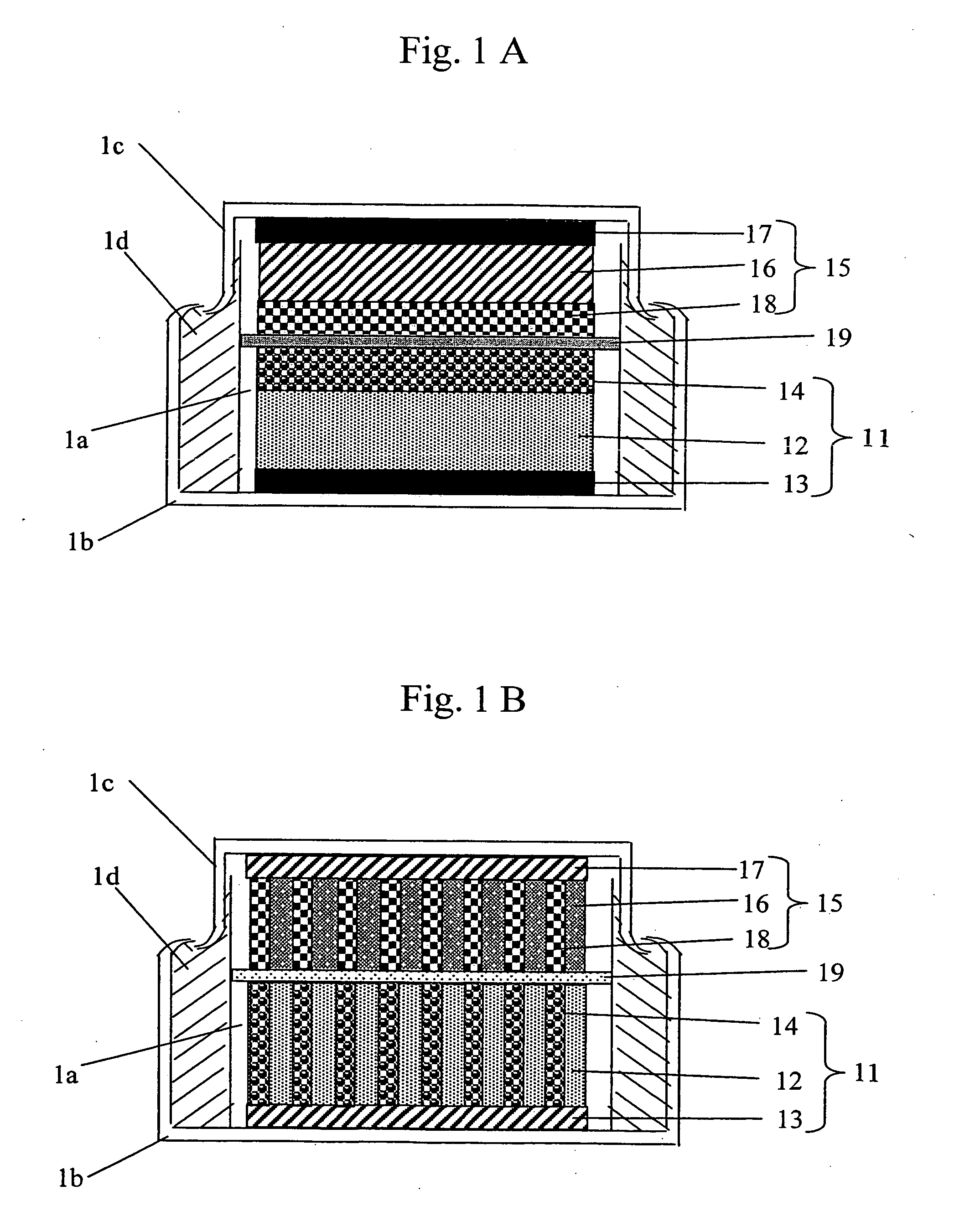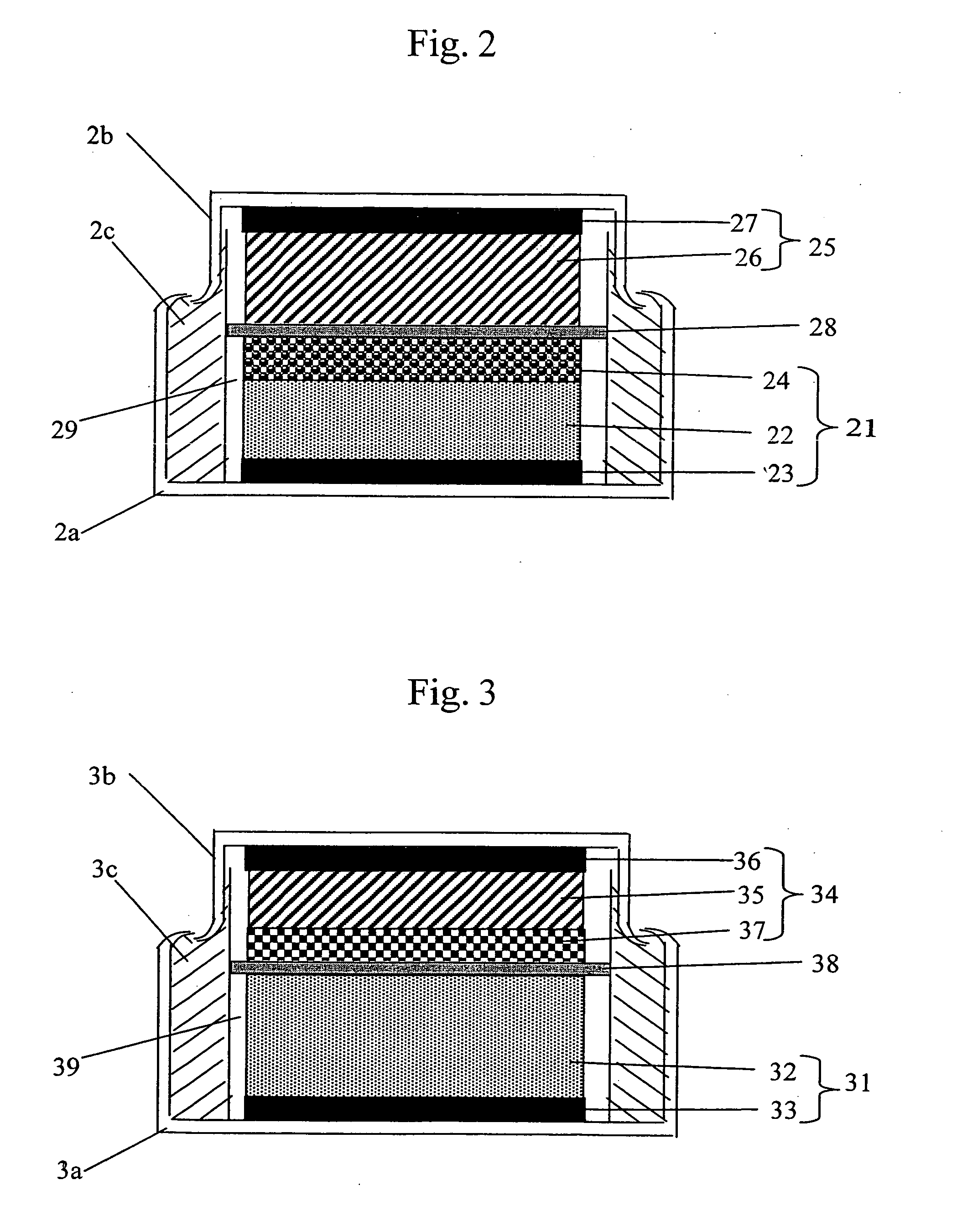Energy device
a technology of energy devices and capacitors, applied in the direction of capacitor collector combinations, electric vehicles, vehicle components, etc., can solve the problems of low energy density, low input-output performance of secondary batteries, and inferior charge-discharge performance of secondary batteries under a large current, so as to secure the effect of using capacitors more conspicuously and excellent output performan
- Summary
- Abstract
- Description
- Claims
- Application Information
AI Technical Summary
Benefits of technology
Problems solved by technology
Method used
Image
Examples
example 1
[0059] A coin-type energy device having the configuration shown in FIG. 2 was produced. The positive electrode 22 was produced, in the same way as the positive electrode 72 of Comparative Example 1 except that the weight of the positive electrode mixture was controlled so as to be 12 mg / cm2 in this case, by applying the mixture onto one surface of the positive electrode collector 23 comprising aluminum foil 20 μm in thickness and drying it. Further, activated carbon having a specific surface area of 2,000 m2 / g and carbon black 0.04 μm in average grain diameter having a specific surface area of 40 m2 / g were mixed so that the ratio thereof was 8 to 1 in weight. As the binding agent, solution formed by dissolving polyvinylidene fluoride of 8 wt % in N-methylpyrrolidone beforehand was used. Then the activated carbon, carbon black and polyvinylidene fluoride were put together so that the percentages thereof were 80, 10 and 10% respectively and mixed sufficiently, and the mixture was used...
example 2
[0070] A coin-type energy device having the configuration shown in FIG. 10 was produced. A positive electrode 102 was produced by: forming paste by mixing the mixture of nickel hydroxide powder acting as an active material and cobalt hydroxide acting as an electrically conductive auxiliary agent with the solution produced by dissolving PVA (polyvinyl alcohol) in water; filling foamed metal comprising Ni with the paste; and thereafter drying and pressing it. A layer 103 wherein non-faradaic reaction occurred was formed on the positive electrode 102 by applying thereon slurry in the state of paste produced by mixing the mixture of activated carbon and carbon black acting as an electrically conductive auxiliary agent with the solution produced by dissolving PTFE (polytetrafluoroethylene) in water onto the positive electrode 102 by coating. The product was dried and subjected to roll press, and thus the electrode was produced. The produced electrode was punched into a disk 16 mm in diam...
example 3
[0072] A coin-type energy device having the configuration shown in FIG. 11 was produced. A positive electrode 112 was produced by: coating one surface of a positive electrode collector 113 comprising aluminum foil 1 mm in width and 20 μm in thickness with positive electrode slurry of Comparative Example 1 in such a manner as to form non-coated portions at intervals of 1 mm; and drying them. The weight of the positive electrode mixture was controlled so as to be 25 mg / cm2. Further, activated carbon having a specific surface area of 2,000 m2 / g and carbon black 0.04 μm in average grain diameter having a specific surface area of 40 m2 / g were mixed so that the ratio thereof was 8 to 1 in weight. As the binding agent, solution formed by dissolving polyvinylidene fluoride of 8 wt % in N-methylpyrrolidone beforehand was used. Then the activated carbon, carbon black and polyvinylidene fluoride were put together so that the percentages thereof were 80, 10 and 10% respectively and mixed suffic...
PUM
| Property | Measurement | Unit |
|---|---|---|
| temperature | aaaaa | aaaaa |
| temperature | aaaaa | aaaaa |
| diameter | aaaaa | aaaaa |
Abstract
Description
Claims
Application Information
 Login to View More
Login to View More - R&D
- Intellectual Property
- Life Sciences
- Materials
- Tech Scout
- Unparalleled Data Quality
- Higher Quality Content
- 60% Fewer Hallucinations
Browse by: Latest US Patents, China's latest patents, Technical Efficacy Thesaurus, Application Domain, Technology Topic, Popular Technical Reports.
© 2025 PatSnap. All rights reserved.Legal|Privacy policy|Modern Slavery Act Transparency Statement|Sitemap|About US| Contact US: help@patsnap.com



